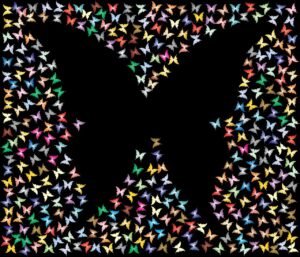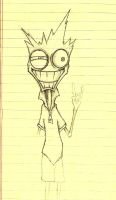When you picture mathematicians and theorists at work, what comes to mind? Maybe it’s a chalkboard covered in equations or a computer screen with lines of code. But what might surprise you is that many of these brilliant minds rely on something a bit more old school—a sketchbook. Yes, sketchbooks aren’t just for artists. They’re an essential tool for mapping out ideas, visualizing abstract concepts, and letting creativity flow freely in the world of math and theory.
So, let’s dive into how mathematicians and theorists use sketchbooks to do what they do best—solve problems, build models, and explore the infinite possibilities of their disciplines.
Why Sketchbooks Are So Useful for Mathematicians
Math isn’t just crunching numbers. It’s about patterns, relationships, and often, visualizing things that don’t yet exist in the real world. That’s where sketchbooks shine. They give mathematicians a place to freely jot down, draw, and experiment with ideas—without any pressure to make everything look neat or perfect.
A Place for Creative and Logical Thinking
Math might sound rigid, but it’s surprisingly creative. Whether you’re working on equations or trying to figure out a new geometric shape, sketchbooks can help you see the big picture. They provide space for creative brainstorming that’s not limited by software or formal documentation.
Thinking Beyond the Page
Sketchbooks can be your thinking lab. From scribbling diagrams to exploring how different numbers relate to each other, mathematicians use them as a springboard to build bigger ideas. And let’s be real, sometimes it’s just nice to get away from the computer screen.
How Theorists Use Sketchbooks for Big Ideas
For theorists, sketchbooks offer the freedom to connect dots between abstract ideas. Imagine trying to visualize how the universe works, test a hypothesis about human behavior, or map out a system in economics—that’s the kind of big-picture stuff sketchbooks are perfect for.
Breaking Down Complexity
Let’s say you’re trying to build a theoretical model. A sketchbook lets you break it down visually. You can sketch diagrams, link concepts, or even test out multiple ideas on the same page. It’s about simplifying the complex so it’s easier to understand and share.
Trial and Error? No Problem
Sometimes, ideas don’t work out—and that’s okay. A sketchbook gives you the space to play, make mistakes, and come back to it later with fresh eyes. The beauty of sketching is that it feels low-stakes but can lead to high-impact discoveries.

Sketchbooks.org | NEW TECHNIQUES
Negative Space Carving Sketch | Outline the Space Around Your Subject for Bold Visual Impact
Negative Space! In the world of visual art, sometimes what you don’t draw is just as important as what you do. A negative space carving sketch is a powerful technique that flips the traditional approach...
Making Abstract Concepts Visual
Both mathematicians and theorists often work with ideas that are tough to pin down. That’s why visualization is such a critical part of their process, and sketchbooks help make it happen.
Think Geometry and Beyond
Working with geometry, topology, or anything spatial? Sketchbooks are a must. Whether you’re drawing 3D models or graphing a complex curve, it helps to get those ideas onto the page to see how they fit together.
Logic in Action
For theorists, logic diagrams, flowcharts, and conceptual maps take center stage in a sketchbook. These tools make it easier to understand relationships between ideas or test out how systems interact.
Physical or Digital Sketchbooks? Why Not Both?
Here’s the thing about sketchbooks: there’s no one-size-fits-all approach. Some people prefer the feel of a physical notebook, while others are all about the flexibility of digital tools. Here’s a quick look at the pros of each:
The Case for Physical Sketchbooks
- They’re Distraction-Free: No pop-up notifications here.
- It’s Personal: There’s something special about flipping through pages filled with your own handwriting and sketches.
- Simple and Reliable: You don’t need anything fancy—just a notebook and pen.
Why Go Digital?
- Easy to Edit: Made a mistake? No problem—just erase or resize with a click.
- Perfect for Collaboration: With tools like tablets or digital notebooks, it’s easy to share your ideas with a team.
- Integrate with Software: Many mathematicians sync their digital sketches with other apps or tools they use for calculations.
Tips for Getting the Most Out of a Sketchbook
So, how can you make your sketchbook work for you? Here are some ideas:
1. Create Sections
Divide your sketchbook into areas for specific topics. For example, you might have one section for equations, another for ideas, and a third for testing out concepts.
2. Don’t Be Precious
Your sketchbook doesn’t have to look perfect. It’s a space to experiment, make mistakes, and explore. Scribble all over it if you want—there are no rules.
3. Regularly Flip Back
Sometimes, an idea you jotted down weeks ago becomes the key to solving today’s problem. Make it a habit to revisit old pages—you might just find a hidden gem.
Sketchbooks in History: How the Greats Used Them
Some of the most influential thinkers in history were big fans of sketchbooks. Leonardo da Vinci? He was sketching everything from flying machines to the Golden Ratio. Alan Turing? He mapped out logic problems and early computer designs. Even Ramanujan, the legendary mathematician, sketched his ideas on loose pieces of paper that later became groundbreaking theories.
It just goes to show—sometimes, all you need is a blank page and a pen to change the world.
Why You Should Try Using a Sketchbook
Whether you’re solving math problems, exploring abstract theories, or just trying to organize your thoughts, a sketchbook can be your best friend. It’s a place to think freely, capture inspiration, and work through challenges in a way that feels natural and fun.
So, grab a sketchbook (physical or digital) and start exploring. Who knows? The next big idea might just be waiting for you on the blank page in front of you. Happy sketching!
Ready to Share Your Work?







